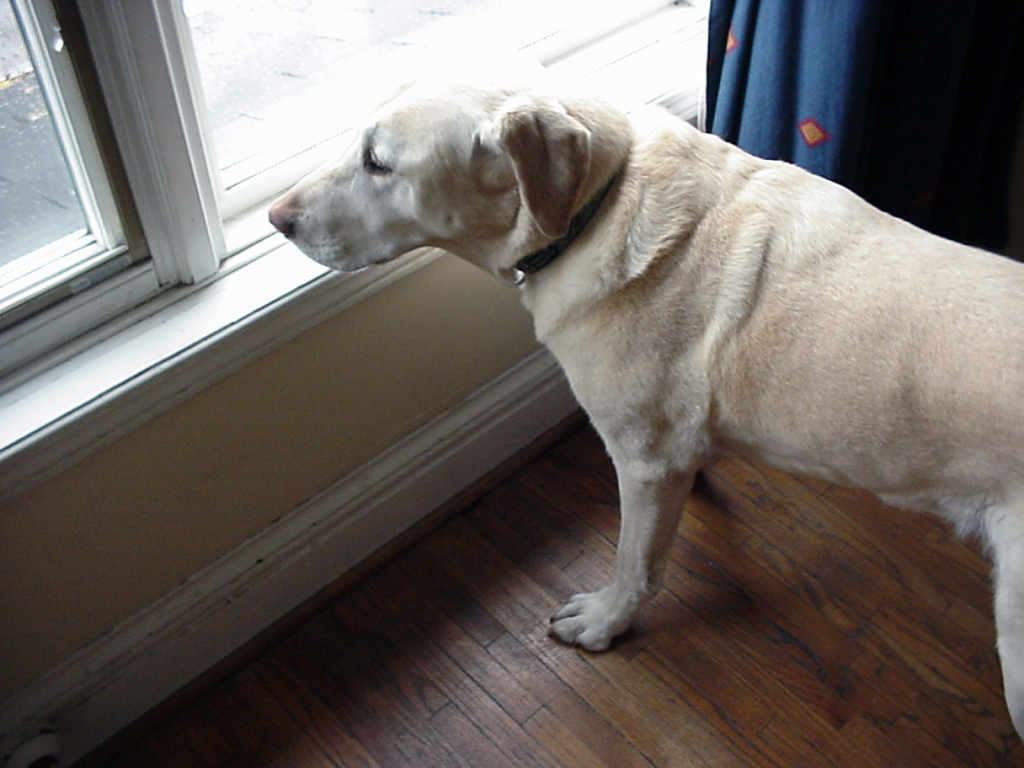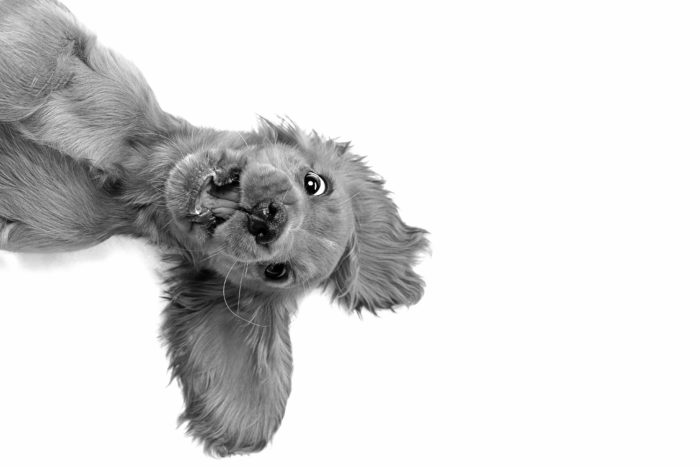Puppies can become hyper-stimulated. Often this type of behavior is due to too much free, unchallenging, and unsupervised time. If your puppy has become wild and is nipping and biting at your ankles, hands, or clothing you need to review the amount of time he’s spending out of the crate and what is happening during this time (for proper crate use review House Training).
This is similar to babies and children. Babies need plenty of nap time in a safe spot, otherwise they get over tired and cranky. Small children also need naps and structured time during the day, otherwise they become frustrated and overtired. Puppies are the same and require stimulation, guidance, and plenty of nap time.
Do a clock watch. Let’s say that you see this behavior begin to take place 30 minutes after you take your puppy out of the crate. The next time you take your pup out, put him back in the crate after 20 minutes for some quiet downtime.
Make sure his time out of the safe spot is stimulating and interesting for him. Is there a challenge in place, something fun and exciting for him to think about and do? By motivating and properly supervising your puppy you not only preempt the development of wild behavior, you are wisely and effectively making use of your time together. Better yet, you will feel confident that you are putting your pup back in the crate when he is tuckered out and needs a rest. Both you and your pup will be happier because you are providing what is necessary for him to blossom into a great friend for life and you are setting your puppy up to succeed.
With a clock watch in place and every effort to keep your puppy successful, you should see a decline in wild-biting behavior. Isolated incidents may be solved successfully with the following suggestions.
- Does your puppy need a nap? An overtired puppy can be extra bitey.
- Is your puppy hungry? Does he need a meal or a snack – a hungry puppy can be extra bitey.
- Direct your puppy to an acceptable activity. If it is on his own you will most likely need to include food or a chew (bully, knucklebone, yak cheese, hoof, etc)
- Does he need to burn some energy with a game of tug followed by a good chew?
When it comes to nipping and biting there is no single, easy solution for all puppies. This type of problem-solving requires you to be creative. You need to stay engaged with your puppy and set him up for success. It also means not putting any responsibility on the puppy, but rather, assessing each situation on an ongoing basis and coming up with an appropriate solution.
Dogs explore the world with their mouths. It is very important to keep in mind that biting is a natural behavior for your puppy and to get angry with him or punish him is not solving the problem. You need to teach a young puppy what is acceptable. This takes patience, effort, and consistency.

All of these exercises should be done regularly during the first year of the dog’s life. Make a point to do these exercises once or twice a week during his first 14 weeks. Progress to once every couple of weeks and then periodically until the dog is sexually mature (see Your Puppy’s Development.) Even after sexual maturity, now and again it is important to lay some of these exercises on your grown-up dog. Just like people, dogs can get rusty.

